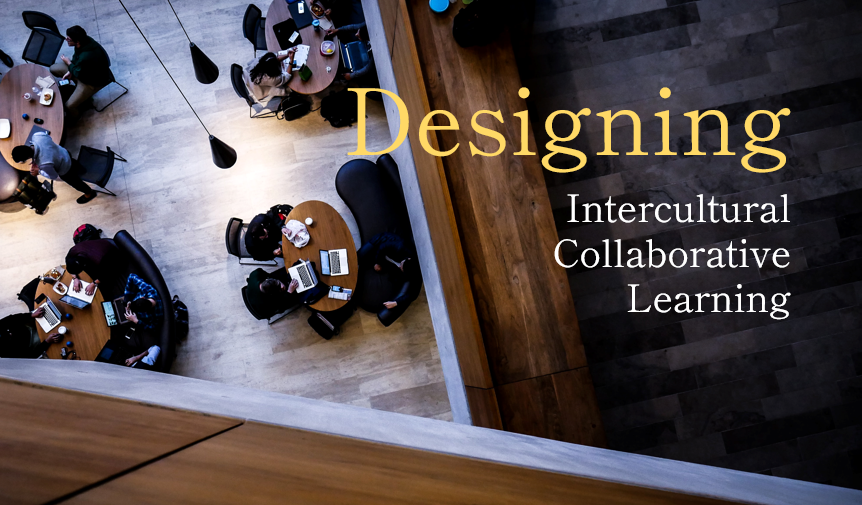How is it implemented? Designing Intercultural Collaborative Learning

Getting students to create active learning opportunities for each other sounds simpler said than done. What, then, actually goes on in Intercultural Collaborative Learning, or ICL? And what do class and activity instructors need to know in order to create such a learning environment?
First, let’s consider some approaches to ICL that have low odds of success.
- Students from diverse cultural/ linguistic backgrounds, e.g. international and Japanese students, are simply put together in the same class.
- Learning time makes heavy use of discussion, groupwork, etc.
- The main objective is to improve the foreign language skills of the learners.
- The class design fails to take into account differences in the learners’ language abilities, experiences, skills, and perspectives, treating them as “diversity.”
What all these approaches share is a lack of sufficient “intentionality” in the design of the ICL class.
When planning ICL, it is important to fully address the following two questions through your design.
- Do my methods enable everyone in the learning environment to understand the point of mutual learning? (Significance)
- Are my methods actually capable of enabling mutual learning for everyone in the learning environment? (Feasibility)
Let’s try adding some methods of answering the above “significance” and “feasibility” questions to the four inadequate approaches from earlier. This should allow us to create an ICL environment capable of achieving class and activity goals.
Students with diverse cultural/ linguistic backgrounds, e.g. international and Japanese students, simply take the same classes together.
- At the beginning of the class or activity, have all participants give self-introductions. This will allow them to see that the learning environment contains people from diverse cultural/ linguistic backgrounds.
- Provide opportunities, through student self-introductions or simple collaborative projects, for all participants to get a rough sense of their classmates’ proficiency levels in the language(s) used in class.
- Link class/ activity goals to the fact that participants from diverse cultural/ linguistic backgrounds are present. This will encourage an understanding of diversity as a learning resource.
Learning time makes heavy use of discussion, groupwork, etc.
- Explain, in a way that all participants can understand, why discussions and groupwork are being incorporated into learning time.
- Explain, in a way that all participants can understand, what results they will obtain from discussions and groupwork, and how they will be evaluated.
- Explain, in a way that all participants can understand, how discussions and groupwork will contribute to their grade (if it is a class), or to their activity goals (if it is an extracurricular activity).
The main objective is to improve the foreign language skills of the learners.
- Make it clear to all participants that, regardless of the type of class or extracurricular activity, ICL incorporates “the deepening and widening of learning through collaboration” in its goals, and that this is one of their top priorities.
- Make it clear to all participants that in ICL emphasis will be placed on acquiring “big-picture” perspectives and thinking skills and restructuring their values through collaborative learning, moving beyond linguistic skills that can be obtained through independent study.
- From the beginning, explain to all participants your thoughts on the language(s) to be used in learning and how language ability will be assessed with respect to their grades or activity goals.
The class design fails to take into account differences in the learners’ language abilities, experiences, skills, and perspectives, treating them as “diversity.”
- From the outset of the class or activity, the instructor should create opportunities to ascertain gaps or differences between individual learners.
- Having understood these, the instructor must then assess which should be remedied or compensated for in the learning environment and which should be utilized as a form of diversity.
Example: During group projects, if possible make groups that contain learners with diverse cultures/ languages, experiences, knowledge, skills, etc. In groups of students who all share the same culture, try to ensure each group contains students with different experiences. This will create complex interactions between a number of factors, such as culture, experience, etc., and promote understanding of the potential for the creation of new value systems. - Explain to all participants your thoughts on the gaps or differences between them, and how you will ensure fairness in your assessments with respect to grades or activity goals.

